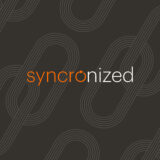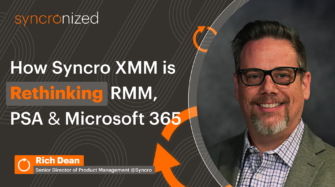What is remote IT management software?
It is a platform that provides discovery, access, monitoring and control of IT endpoints over a network.
These systems provide IT service professionals with a way to efficiently scale IT operations across multiple sites. Typical use cases for remote management systems include remote support, patch management, troubleshooting and software installs. For MSPs, a remote management system — also known as remote monitoring and management (RMM) software — is a critical tool because it provides a cost-effective way to support multiple clients without needing onsite staff at every location.
How it works
Remote IT management works using a combination of RMM agents, network protocols and a centralized platform of additional tooling.
RMM agents run on endpoints to provide a mechanism for remote access and instrumentation to support monitoring, patching and scripting. To support network discovery and endpoint monitoring without an RMM agent, remote management systems also use network protocols like SNMP.
Remote management software then ties it all together with software capabilities such as scripting, backgrounding tools, alerting, notifications and reports to empower MSPs with the tools they need to support their clients from a centralized console.
Core components of a remote management system
Making an informed decision about which remote management system is right for your business requires knowing what to look for. Below, we break down the core components of a remote management system. Use this as a starting point when vetting vendor options to ensure it has a strong foundation of features and functionality.
Simple RMM agent installation
Overly complex agent installation can lead to wasted time and assets going unmanaged. To avoid this pitfall, look for scalable agent install options such as silent install and deployment via group policy.
Automation and scripting
Automation and scripting capabilities are essential for scaling MSP operations and help ensure reliable results for repetitive workflows. Remote management platforms with powerful scripting capabilities — such as including dynamic variables in scripts — can drastically reduce the time technicians spend on tedious but necessary IT workflows.
Monitoring and Alerts
Maintaining visibility over managed assets is essential for meeting SLAs and reducing mean time to recover (MTTR). Remote management systems allow you to monitor resources like CPU, RAM and disk; detect when systems go online; and receive alerts for issues such as servers failing with a blue screen of death (BSOD).
Asset Templates
Asset templates are policies that define settings for a group of assets. Templates enable you to streamline their remote management system’s configuration while maintaining granular control over their asset inventory.
Patching
Patching operating systems and third-party applications significantly reduce the chances of an endpoint falling victim to a known vulnerability. Remote management systems help you scale patch management across all managed assets and define policies that reduce the risk of human error associated with manual patch processes.
Managed Antivirus
Endpoint security adds a layer of protection within an environment that limits the risk of malware compromising a system and spreading across the network. That’s why managed antivirus (MAV) is a core remote system management feature for MSPs and managed security service providers (MSSPs) alike.
Remote Access and Backgrounding Tools
The quality of an MSP’s remote support significantly impacts SLAs, client satisfaction, and performance KPIs. Remote access and backgrounding tools in a remote management system allow you to improve upon troubleshooting, not to mention your support speed and quality. When evaluating a platform, look for features such as one-click remote access, remote filesystem browsers and terminal access.
Reporting and Dashboards
Reports and dashboards from a remote management system provide visibility into MSP KPIs to support transparency and enable continuous improvement. Additionally, reports can help demonstrate value to clients, inform data-driven purchasing decisions, and identify trends in an environment.
Chat
For many end users, chat is the preferred method of communication over phone calls or emails. An RMM platform with built-in chat capabilities enables you to leverage this popular support medium. Features like chat history can make it easier for help desk technicians to quickly understand context when a client contacts them.
Branding
In many ways, your RMM is your “face” to clients. A remote management platform that supports custom branding helps you increase brand familiarity across your client base.
PSA Integration
Professional services automation (PSA) platforms are another critical MSP tool. While remote management systems streamline IT operations, PSAs streamline back-office workflows such as billing and invoicing. A single platform that integrates both PSA and RMM functionality allows you to compound the benefits of each tool, automate more workflows and eliminate data silos.
Remote management: Essential for MSPs
MSPs can’t effectively scale their business and optimize their time without efficient remote management capabilities. Here are four examples of why a remote management system is essential for your operation.
Accommodate an increasingly remote workforce
In addition to supporting multiple clients at different geographic locations, modern MSPs must adapt to the drastic increase in remote work that has occurred in the 2020s. In modern IT environments, endpoints are now spread across multiple network edges, from home offices and airports to coffee shops. Remote management makes supporting those endpoints both possible and practical.
Reduce downtime for customers
Remote management systems increase uptime in two key ways: reducing MTTR and early detection of problems. When a service disruption occurs, remote management systems can enable an MSP to remotely resolve the issue or even automation remediation to restore service quickly. Additionally, remote management enables visibility that allows service providers to detect problematic trends before they become outright service disruptions.
Provide greater security
Unpatched endpoints are one of the biggest security risks in modern IT. Remote management systems provide a mechanism to detect and update unpatched systems. Additionally, service providers can enforce policies and execute scripts to help detect and mitigate risks such as insecure configurations and unused network services.
Increase efficiency and scalability
Remote system management acts as a force multiplier for IT service providers. Remote system access drastically reduces the need for expensive truck rolls and enables technicians to solve problems at multiple locations from the comfort of their desks. Additionally, automation and scripting help you service clients and support IT infrastructure “while they sleep” – and without direct human interaction.
All-in-one remote management software can drive profitability
Syncro is an all-in-one MSP platform that integrates PSA, RMM and remote management into a single solution. With Syncro, MSPs gain a single dashboard for all their core tools. Syncro’s transparent and simple per-technician pricing incentives growth and the entire system is purpose-built to help MSPs increase their profits and delight their customers.
Put Syncro to the test in your environment

Share














